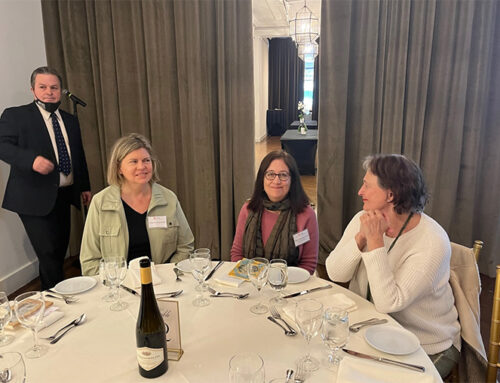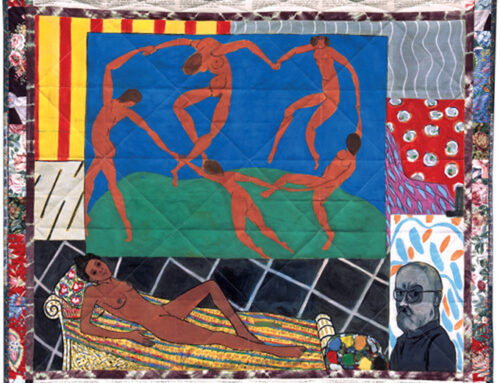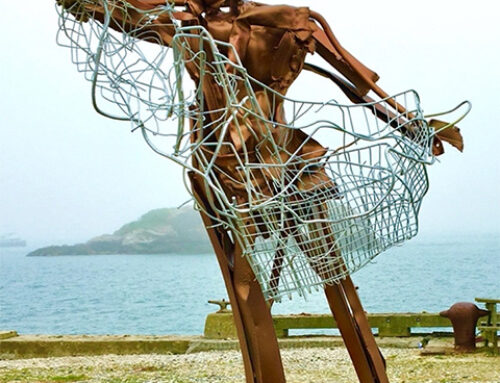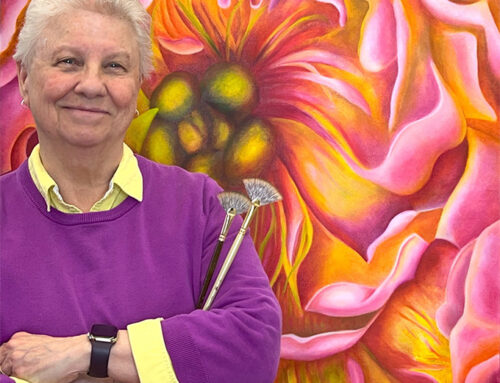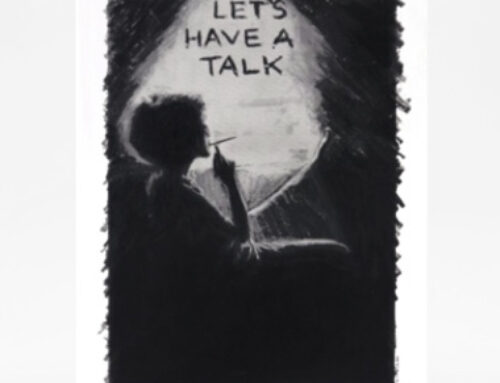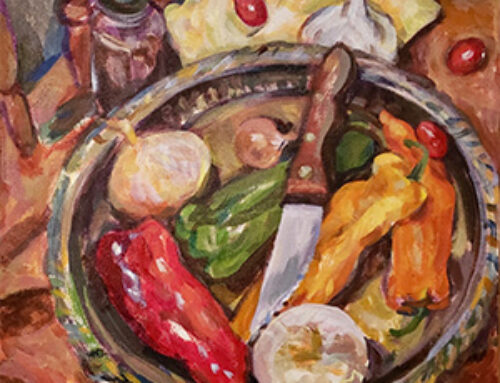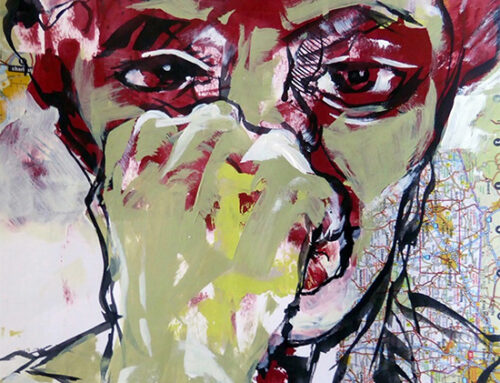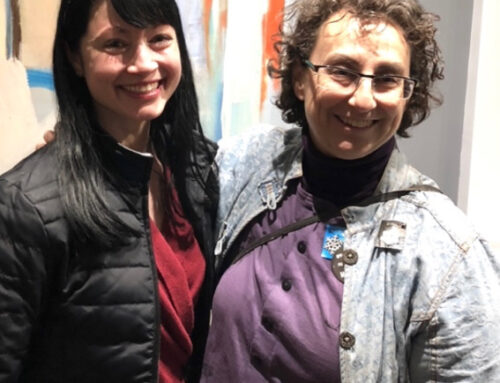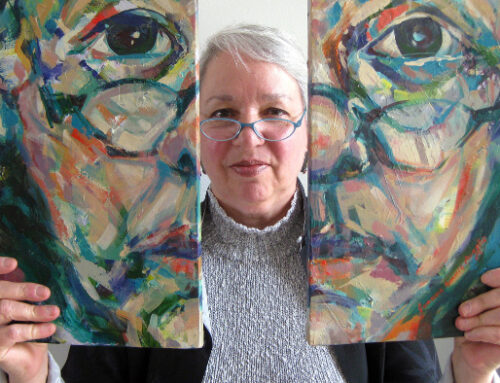Joan Lewis
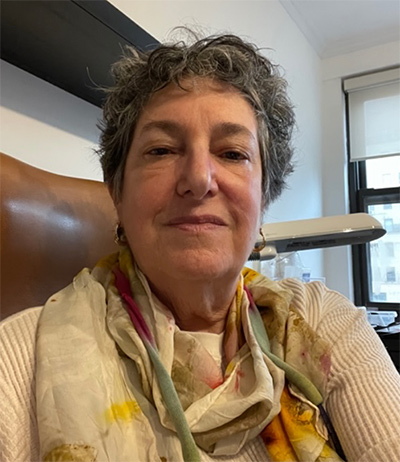 SB: When did art first enter your young life? Was it through parental or teacher encouragement or just the natural curiosity of an awakening child?
SB: When did art first enter your young life? Was it through parental or teacher encouragement or just the natural curiosity of an awakening child?
JL: Art entered my life as a grade schooler: I grew up in Trenton, NJ and we had “Y” downtown. Every Saturday morning my mother would take me to the Y for an art class, followed by a ballet class. I hated the ballet class but I loved the art class! As a child I climbed the stairs to the art room each Saturday morning I could smell the scent of paste wafting down the stairs. It has stayed with me all these years. In high school I had an amazing art teacher who introduced us to working large and working with unusual materials. She taught us about modern art and I started going into NYC by myself to go to MOMA. She was such an inspiring teacher! I spent most of my senior year taking intensive art studio courses.
SB: What direction did your creativity take? How did your schooling influence your direction?
JL: In high school, I concentrated on painting and sculpture, but I really didn’t know what my passion was when it came to art. Over the ensuing years (decades!) of college, law school, and a career I continued to take studio art (and craft) classes when I could and I continued to experiment with different media. In the years leading up to retirement and since retiring, I have focused on two areas—collage and glass. Inasmuch as I had a non-arts education, I can’t say that my formal, academic schooling had an influence on my direction. But the many workshops and classes I took, experimenting with different media, helped me to narrow my focus to collage and glass.
SB: How did your gender affect your choices, the path you took as an adult?
JL: I don’t think gender affected my choices when it came to career choices or the path that I took as an adult. I was determined to be a lawyer and I pursued that career without any thought to gender issues. However, once I began practicing law, I experienced first-hand how big a part gender played in the workplace environment. In my opinion, balancing a career and family was a much bigger challenge for women than men, and part of that challenge included convincing my superiors that even though I was a working mother, I could do as good a job as the male lawyer down the hall.
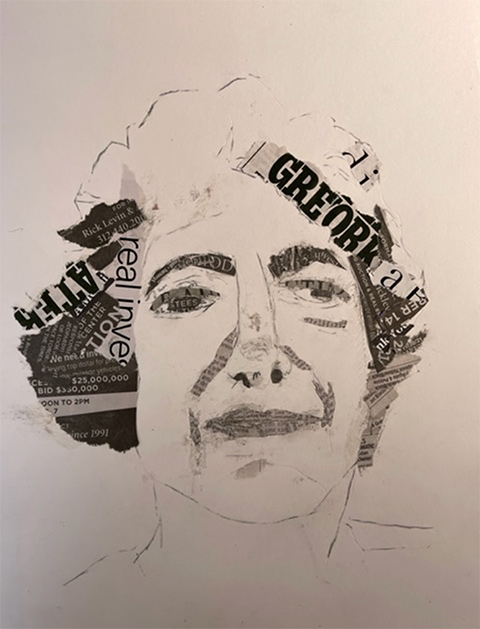
She Said, 8 in. x 10 in.
SB: How did your interest in the arts take you in a more active direction, interacting with other like-minded individuals?
JL: In the years leading up to retirement, I started taking more art classes and workshops at night, on weekends, and during vacations. This gave me the opportunity to get to know other artists and art students. I really enjoyed and benefitted from the critique sessions, seeing other people’s work, and the lively discussions with my fellow art students. I also started to gain a degree of confidence in my artwork. Most importantly, the relationships I developed through these classes and workshops provided me with the emotional support I needed to make a major change in my life: In 2012, I retired from the practice of law in order to make art on a full-time basis.
SB: As an active member of NAWA’s national board of directors, what are your hopes and plans for the future of our organization dedicated to the promotion of women artists? What is the biggest challenge facing NAWA today?
JL: I hope that NAWA will continue to grow—to add more chapters around the country and to add a new generation of women artists. I believe the biggest challenge facing NAWA today is attracting women artists in the early and mid-stages of their careers. Many young women artists may believe that an organization dedicated to promoting women artists is anachronistic and that gender equity in the art world is on the horizon.
Sadly, the statistics show otherwise. By any measure, whether one looks at museum acquisitions, auction sales, the number of women artists represented in gallery shows, or the number of women-owned galleries, the gender imbalance remains intact. An article I recently read in Artnet News said it best: “It is clear that the art market overwhelmingly finds greater value in work produced by men than that made by women.” In my view, NAWA’s mission to promote women artists remains as relevant today as when NAWA was founded in 1889.
SB: What would be your advice to the young women today, those interested in a career or life path in the arts?
JL: I think young women should pursue their passion. In the end, if you don’t love what you do, and you are spending your days, say, making spreadsheets when you really want to make art, then you are missing out on a lot of joy. I realize that choosing a career in art is not an easy path. There are bills to pay and the income stream for most young artists is unpredictable. It may be necessary to get a “day job” to pay the bills, but if you have a passion to create, you will find the hours to devote to making art.
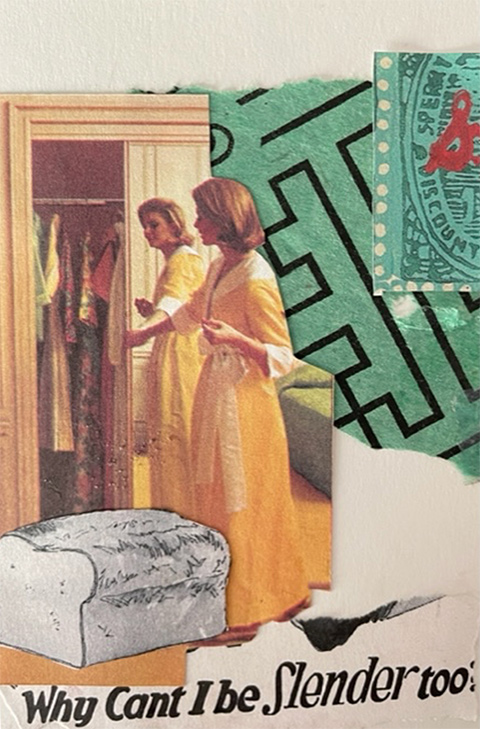
Why Can’t I be Slender too? 8 in. x 10 in.



